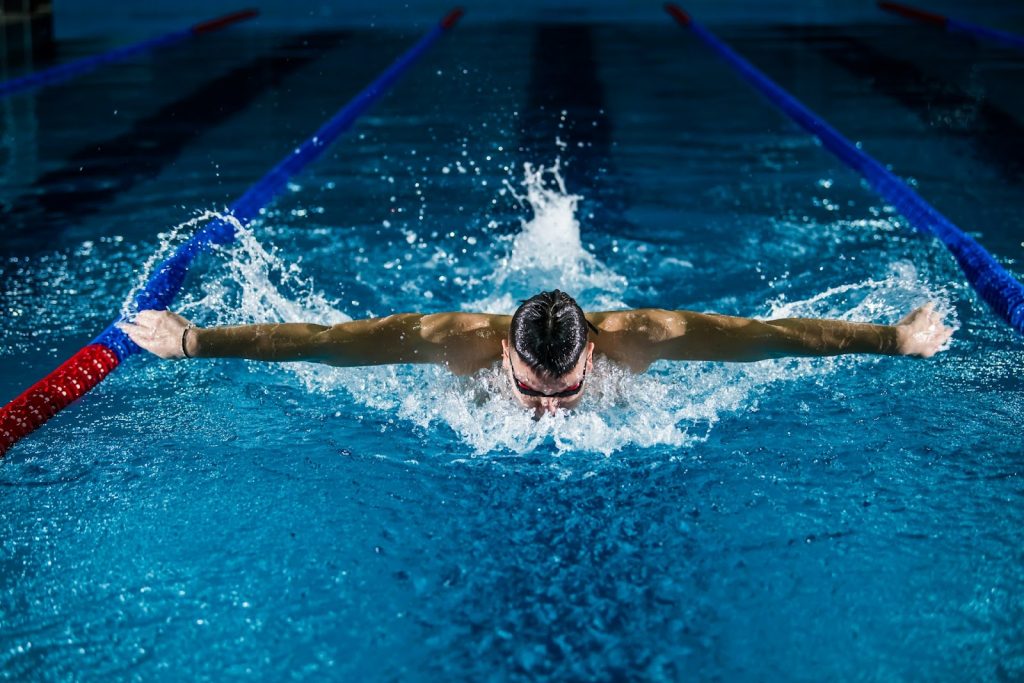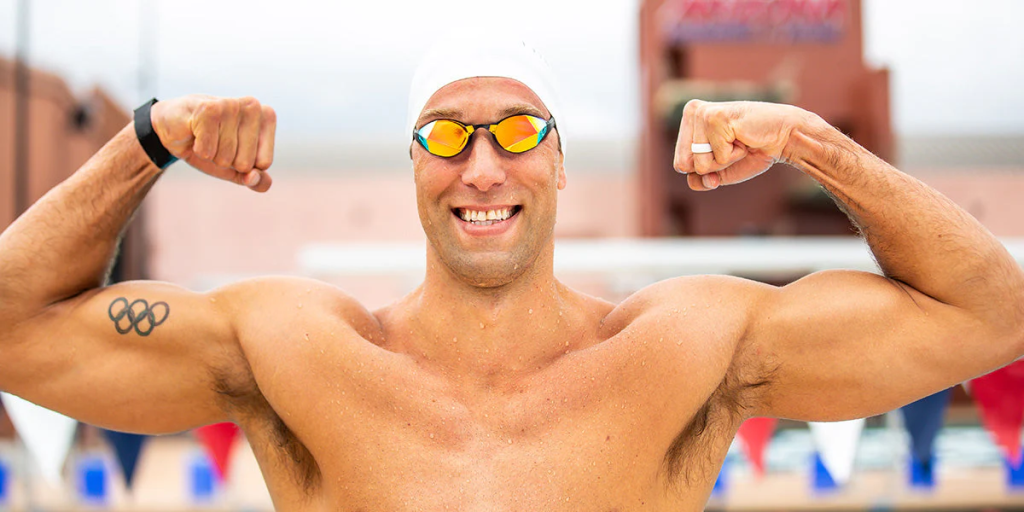29 de May de 2025
Strength and Conditioning Training for Swimmers
Swimming may appear to be purely an endurance sport at first glance; however, powerful strokes and explosive starts require more than just cardiovascular fitness. Building a robust strength foundation can boost stroke power, reduce injury risk, and help swimmers maintain efficiency through every lap. Below is a comprehensive look at why strength training matters for swimmers, how to incorporate it effectively, and the role of Strength and Conditioning (S&C) in optimizing training outcomes.

Why Strength Training Is Essential for Swimmers
- Increased Propulsion: Stronger upper-body and core muscles let swimmers pull more water per stroke, improving overall speed.
- Enhanced Start & Turn Power: Explosive leg and core strength translate directly into faster push-offs from the blocks or walls.
- Improved Stroke Mechanics: A solid strength base supports correct form and alignment, reducing the likelihood of common overuse injuries.
- Injury Prevention: Targeted dryland exercises (especially for the shoulders and core) help protect joints from repetitive stress.
- Sustained Speed: As swimmers get stronger, they can maintain higher stroke rates and speeds with less fatigue.
The Role of Strength and Conditioning (S&C) in Swimming
Strength training is only one element of a broader, well-planned approach to improving athletic performance in the pool. A structured strength and conditioning program not only focuses on building muscle strength but also covers periodization, progressive overload, movement efficiency, and balanced recovery. By integrating these principles, swimmers can better adapt to training loads, avoid plateaus, and ensure that their dryland work translates effectively to the water.
In practical terms, an S&C plan for swimmers often includes:
- Targeted Periods of Emphasis: Off-season strength blocks, pre-season power development, and in-season maintenance.
- Progressive Overload and Variation: Gradually increasing intensity or volume to stimulate adaptation, while rotating exercises to keep sessions fresh.
- Balanced Energy System Work: Complementing pool sessions with the right mix of resistance, plyometrics, and mobility exercises tailored to the demands of each stroke.
Recovery Strategies: Factoring in adequate rest, nutrition, and mobility work to ensure swimmers remain fresh for high-quality pool training.

Key Muscle Groups for Swimmers
- Shoulders & Upper Back (lats, rotator cuff, trapezius): Provide pulling power for freestyle, backstroke, and butterfly, plus stability in all strokes.
- Core & Hips: A strong midsection helps maintain a streamlined position, improving body roll and reducing drag.
- Legs & Glutes: Crucial for explosive starts, turns, and the consistent kick required in all four strokes.
- Forearms & Grip: Not the primary focus, but supportive grip strength can reduce wrist fatigue and improve alignment.

Strength & Conditioning Program
Effective Strength Training Exercises for Swimmers
1. Pull-Ups or Chin-Ups
- Why It Helps: Mimics the pulling motion of freestyle and butterfly. Boosts lat and shoulder strength.
- Progression: Start with assisted versions if needed, then add weight for advanced swimmers.
2. Lat Pull-Downs
- Why It Helps: Great alternative or supplement to pull-ups for building pulling power. Emphasizes lat engagement.
- Tip: Maintain a controlled tempo to avoid swinging.
3. Dumbbell Shoulder Press
- Why It Helps: Reinforces overhead stability, crucial for backstroke and the freestyle recovery phase.
- Tip: Opt for moderate weights, focusing on form over heavy loads to protect shoulders.
4. Planks & Variations (Side Planks, Plank Rows)
- Why It Helps: Strengthens the core and enhances the body line in the water.
- Progression: Add single-arm plank rows or side plank with leg raise for an extra challenge.
5. Squats & Lunges
- Why It Helps: Builds leg power for explosive push-offs and turns.
- Variations: Barbell back squats, front squats, split squats, or walking lunges.
6. Glute Bridges or Hip Thrusts
- Why It Helps: Engages the posterior chain (glutes, hamstrings), boosting hip extension and stability for kicks.
- Tip: Emphasize full range of motion and a pause at the top.
7. Med Ball Slams or Throws
- Why It Helps: Develops explosive core and shoulder power, replicating the forceful movement needed for starts.
- Variations: Overhead slams, rotational throws, chest passes.
8. Shoulder Stabilization Drills
- Why It Helps: Prevents overuse injuries by strengthening the rotator cuff and scapular stabilizers.
Examples: External rotations with a resistance band, scapular retractions, I-Y-T raises.

Watch On Demand: How Elite Coaches Use Data to Build Champions
Structuring a Strength Training Program
Swimmers should approach strength training as a complement to pool workouts. Below is a sample weekly framework, focusing on 2–3 sessions that won’t overly tax recovery:
| Day | Session Focus |
|---|---|
| Monday | Upper Body Strength (Pull-Ups, Rows, Shoulder Presses) |
| Tuesday | Swim Session (Main Technique/Speed Work) |
| Wednesday | Lower Body/Explosive (Squats, Glute Bridges, Med Ball Throws) |
| Thursday | Swim Session (Endurance/Intervals) |
| Friday | Mixed/Core Stability (Planks, Lunges, Band Drills) |
| Saturday | Swim Session (Race Pace or Sprint Emphasis) |
| Sunday | Active Recovery or Rest |
Volume & Intensity
- Sets & Reps: Typically 2–4 sets of 8–12 reps for general strength. Reduce rep ranges (4–6) for focusing on power, but ensure proper technique.
- Load Progression: Increase weights gradually. Swimmers often focus on technique and moderate loads rather than maximum lifts to avoid excess bulk.
- Frequency: 2–3 strength sessions per week is enough to see improvements without compromising swim sessions.
Technique & Recovery Considerations
- Warm-Up Thoroughly: Dynamic stretching and light band exercises prime shoulders, hips, and core before lifting.
- Mind the Shoulders: Swimming demands repetitive overhead motions. Don’t overload the shoulders with too many overhead lifts; incorporate rotator cuff care.
- Adequate Rest: Schedule at least 48 hours between intense upper-body sessions to allow for full recovery.
- Integrate Core Stability: Steady planks, rollouts, and anti-rotational drills ensure a stable trunk in the pool.
- Gradual Progression: A measured approach to increasing load or complexity helps avoid injuries and fosters consistent strength gains.

Sample Workout: Upper & Core Emphasis
- A1: Pull-Ups (Assisted if needed)
3×8–10 reps - A2: Plank with Shoulder Taps
3×30–45s - B1: Dumbbell Shoulder Press
3×10 reps - B2: Side Plank (each side)
3×30s - C1: Lat Pull-Downs
3×12 - C2: Band External Rotations
3×12 each side - Finisher: Light Medicine Ball Slams
2–3×8 (emphasize speed, not weight)
Strength Training & Swimming Performance
- Starts & Turns: Swimmers with a strong lower body can explode off the blocks or walls, gaining precious time in sprints or races with multiple turns.
- Stroke Efficiency: A stronger pull phase boosts distance per stroke, conserving energy over long events.
- Reduced Fatigue: Enhanced muscular endurance and a robust core help maintain technique when fatigue sets in.
- Injury Prevention: Balanced strength training (including scapular stabilizers, rotator cuffs, and glute muscles) lowers the risk of overuse injuries.
Final Thoughts
Strength training for swimmers isn’t about packing on mass; it’s about functional power, stability, and endurance that translate directly into the pool. By targeting key muscle groups—shoulders, back, core, and legs—and following a structured yet flexible program, swimmers can see improvements in starts, turns, and overall stroke efficiency.
Consistency is key. Combine a well-rounded dryland regimen with high-quality swim training and proper recovery to carve the path toward faster times and a healthier, more resilient athlete. Whether you’re just starting to add strength work or refining an existing routine, a deliberate, swimmer-specific approach—rooted in the principles of Strength and Conditioning—will pay dividends when it counts most: on race day.
